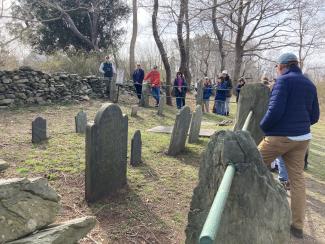Sharp-shinned Hawk (Accipiter striatus) – A very small hawk of only 12″ long, they can be found in the woods during warmer months. They have short, rounded wings, which help them to dart through tree branches in pursuit of their next meal. Look for their long, striped tails. Near the woods, “Sharpies” can be found hanging around active bird feeders.
Black-capped Chickadee (Parus atricapillus) – Common year-round feeder birds, Chickadees often display an amusing behavior of hanging upside-down from branches or feeders. Inquisitive birds, they can be detected by their well-known “chick-a-dee-dee-dee-call.”
Gray Catbird (Dumetella carolinensis) – An enthusiastic singer, you can catch sight of them as you hike through the Sanctuary in the summer. This small gray bird usually chooses easily seen perches in the mid-story area of the forest. Catbirds are named for their cat-like “meow” call.
Downy Woodpecker (Picoides pubescens) – These tiny woodpeckers forage for insects beneath tree bark and are an easily spotted year-round resident at the Sanctuary. In the winter, they often frequent suet feeders. Spring is a great time to listen for “drumming” woodpeckers as they defend their territory and excavate tree cavity nests.
Eastern Towhee (Pilpilo erythrophthalmus) – Also known as the “Rufus-sided Towhee,” this bird is found in the lower level of brushy forested areas. If you hear scratching and the rustling of dead leaves alongside wooded trails in the spring, it may be a foraging Eastern Towhee. When startled, this bird will often fly up to a higher vantage point to observe you.













